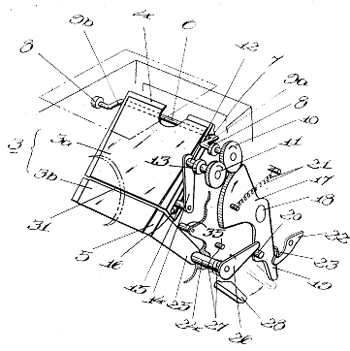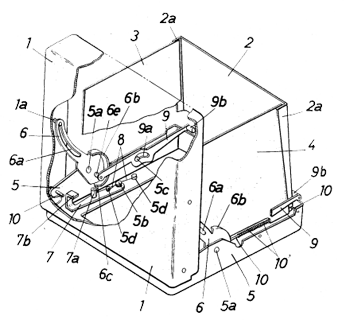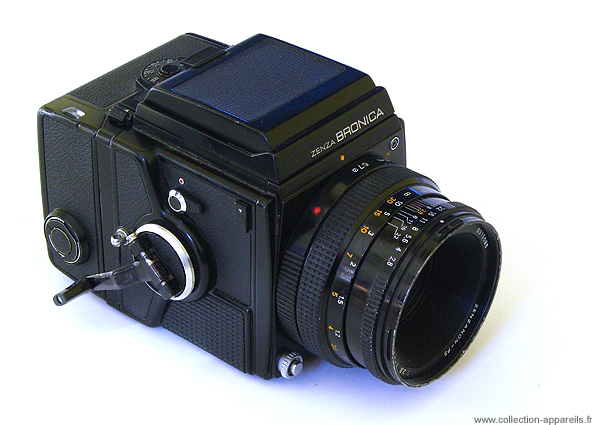|
Bronica SQ |
Manufactured or assembled in Japan from 1980 to (After) 1984.
Index of rarity in France: Rare (among non-specialized garage sales)
Inventory number: 10113
See the complete technical specifications
Chronology of cameras Bronica
M. Zenzaburo Yoshino, an industrialist from Japan1, aimed to create the best Japanese camera post-war by openly drawing inspiration from the proven techniques of Hasselblad. The first Zenza Bronica model, the Z, was introduced in 1958. In 1961, the D and S models were released.
The models continued to evolve until the early 2000s. They were single-lens reflex cameras with interchangeable lenses and backs. The early models featured a focal plane shutter, later replaced by models with a leaf shutter. They were available in 6 x 4.5 cm or 6 x 6 cm formats, using 120 film.
| Focal Plan Shutter(6 x 6 cm) | ||||||||||||||||||||||||||||||||
| S | 61-65 | |||||||||||||||||||||||||||||||
| C | 64-65 | |||||||||||||||||||||||||||||||
| C2 | 65-72 | |||||||||||||||||||||||||||||||
| S2 | 65-69 | |||||||||||||||||||||||||||||||
| S2A | 72-77 | |||||||||||||||||||||||||||||||
| EC | 72-78 | |||||||||||||||||||||||||||||||
| EC-TL | 75-78 | |||||||||||||||||||||||||||||||
| EC-TL II | 78-80 | |||||||||||||||||||||||||||||||
| Leaf shutter | ||||||||||||||||||||||||||||||||
| ETR (6 x 4,5 cm) | ||||||||||||||||||||||||||||||||
| ETR | 76-80 | |||||||||||||||||||||||||||||||
| ETR-C | 77-80 | |||||||||||||||||||||||||||||||
| ETRS | 78-80 | |||||||||||||||||||||||||||||||
| ETRC | 78-80 | |||||||||||||||||||||||||||||||
| ETRSi | 88-04 | |||||||||||||||||||||||||||||||
| SQ (6 x 6 cm) | ||||||||||||||||||||||||||||||||
| SQ | 80-84 | |||||||||||||||||||||||||||||||
| SQ-A | 82-91 | |||||||||||||||||||||||||||||||
| SQ-Am | 82-91 | |||||||||||||||||||||||||||||||
| SQ-Ai | 90-03 | |||||||||||||||||||||||||||||||
| SQ-B | 96-03 | |||||||||||||||||||||||||||||||
 |
 |
| Patent No. 3,675,557 for the mirror moving mechanism in a photographic camera | Patent No. 3,677,162 for the hood for a focusing screen of a camera |
The Bronica SQ is a single-lens reflex camera in the 6x6 format, capable of using 120, 220, and Polaroid films depending on the back used. It is a modular camera inspired by the Hasselblad 500, at the core of an extensive professional system. The mount is specific to this camera family.
The SQ is essentially a reflex chamber. It's a roughly 10 cm cube made of metal and polycarbonate, containing the viewfinder mirror and its mechanism, the shutter release, the film advance crank (coupled to the winding mechanism), and the battery. A removable back can be added, including a 120 or 220 back for 12 or 24 exposure films, a 645 back for producing 6x4.5 cm images, a 24x36 or 24x54 back, or a Polaroid back for instant photography. For viewing, there are various options: attaching the standard cap viewfinder (vertical view, left-right inverted), using an eye-level prism viewfinder (similar to a 35mm SLR), a 45° prism viewfinder, a 90° magnifying finder, or a TTL-coupled prism (allowing exposure automation on the SQ-Ai version).
The crank can be replaced with a quick-wind handle, and a motorized handle was introduced ten years later on the SQ-Ai version. The focusing screen is interchangeable.
The shutter is central and located in the lens. It opens during winding to enable viewing (a shutter closes behind the mirror to prevent veiling the film), closes at the moment of exposure while the shutter opens, and goes through its cycle of opening/closing for film exposure. It remains closed until the next winding, which also closes the shutter and lowers the viewfinder mirror.
Bronica lenses are known for being very sharp and contrasty. The range is extensive, from 35 to 500 mm.
The Bronica SQ system had limited success in France but was much more popular in the United Kingdom. The competition at the time included the Hasselblad 500C/M and Rollei SL66.
The SQ was replaced in 1982 by the SQ-A, which brought some minor improvements, including a mirror lift lever.


Interesting links or bibliography :
| Sur Camera-wiki.org, suggested by Sylvain Halgand |
| Sur Camera-wiki.org, suggested by Sylvain Halgand |
Add a link or element of bibliography, a picture taken with this camera, a picture of box or an ads about this camera
Your photos taken with the same camera:
Cameras from Ebay France (Bronica) (Uploaded each 3 hours)








